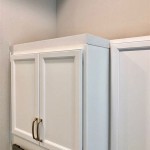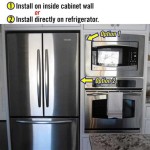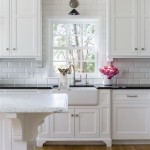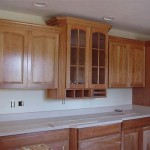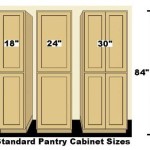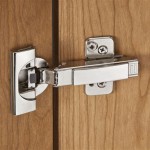Kitchen Cupboard Organizer Ideas for Maximizing Space and Efficiency
Kitchen cupboards often become a repository for an assortment of cookware, food items, and kitchen tools. The lack of a structured organization system can lead to wasted space, difficulty in locating necessary items, and ultimately, a frustrating cooking experience. Implementing effective kitchen cupboard organizer ideas can transform a chaotic space into a functional and efficient hub, allowing for streamlined meal preparation and a more enjoyable kitchen environment. This article will explore several strategies and organizational tools that can optimize kitchen cupboard space and enhance overall kitchen usability.
Before embarking on the organization process, it is crucial to assess the existing state of the cupboards. Removing all items from the cupboards provides a clear view of the available space and allows for a thorough cleaning. This step also offers the opportunity to discard expired food items, broken utensils, and anything no longer needed. A decluttered space is the foundation for effective organization. Consider categorizing items as you remove them. Grouping similar items together, such as baking supplies, canned goods, or cookware, will streamline the subsequent organization process.
Leveraging Vertical Space with Shelf Organizers
Vertical space is often underutilized in kitchen cupboards. Shelf organizers are designed to maximize this space by creating multiple levels within a single shelf. These organizers come in various forms, including wire shelves, tiered shelves, and adjustable shelves, offering flexibility to accommodate different sized items. Wire shelves are particularly useful for storing plates, bowls, and smaller appliances, while tiered shelves are ideal for organizing spices, canned goods, and condiments. Adjustable shelves offer the advantage of customizable height, allowing for the storage of taller items without wasting space.
When selecting shelf organizers, it is essential to consider the dimensions of the cupboards. Measuring the height, width, and depth of the shelves will ensure that the organizers fit properly and do not obstruct the closure of the cupboard doors. It is also important to choose organizers made from durable materials, such as stainless steel or sturdy plastic, to ensure they can withstand the weight of the stored items. Installing shelf organizers can significantly increase storage capacity and improve accessibility to frequently used items. For example, placing a tiered shelf in a cupboard dedicated to canned goods can make it easier to view and retrieve specific items without having to rummage through the entire collection.
Another approach to leveraging vertical space is to utilize under-shelf baskets. These baskets attach to the underside of existing shelves, providing additional storage for items such as dish towels, cleaning supplies, or lightweight kitchen gadgets. Under-shelf baskets are particularly useful in cupboards located near the sink or stovetop, where quick access to these items is often required. Installation typically involves sliding the basket onto the shelf or attaching it with screws or adhesive strips, making it a simple and effective way to expand storage capacity without major modifications.
Implementing Drawer Dividers and Inserts
Kitchen drawers, like cupboards, can quickly become disorganized without a proper system in place. Drawer dividers and inserts offer a means to compartmentalize drawer space, creating designated areas for specific utensils, tools, and gadgets. This prevents items from shifting and becoming tangled, making it easier to locate and retrieve what is needed. Drawer dividers come in various materials, including wood, plastic, and metal, and can be adjustable or fixed in place. Adjustable dividers offer the flexibility to customize the size of each compartment to accommodate different sized items, while fixed dividers provide a more rigid and structured organization system.
Inserts, such as utensil organizers and knife blocks, are designed to fit within drawer compartments and provide specialized storage for specific items. Utensil organizers typically feature multiple slots or compartments for storing separate utensils, such as spoons, forks, knives, and spatulas. Knife blocks provide a safe and organized storage solution for knives, preventing them from becoming damaged or posing a safety hazard. When selecting drawer dividers and inserts, consider the dimensions of the drawers and the types of items that will be stored. Opting for dividers and inserts made from durable materials will ensure they can withstand daily use and resist wear and tear.
Furthermore, consider utilizing drawer liners to protect the bottom of the drawers from scratches and spills. Drawer liners can also provide a non-slip surface, preventing items from sliding around when the drawer is opened or closed. Liners are typically made from rubber, foam, or cork and can be easily cut to fit the dimensions of the drawers. Regular cleaning of drawer liners is essential to maintain hygiene and prevent the buildup of dirt and crumbs.
Utilizing Door Organizers for Added Storage
The interior of cupboard doors represents a valuable storage space that is often overlooked. Door organizers are designed to attach to the inside of cupboard doors, providing additional storage for items such as spices, cleaning supplies, pot lids, and cutting boards. These organizers come in various forms, including racks, baskets, and hooks, offering versatility to accommodate different types of items. Spice racks are particularly useful for storing spices in a visible and accessible manner, allowing for quick and easy retrieval during cooking. Cleaning supply organizers provide a designated space for storing spray bottles, sponges, and other cleaning essentials, keeping them out of sight and preventing clutter within the cupboard.
Pot lid organizers are designed to store pot lids vertically, preventing them from taking up valuable space within the cupboard. Cutting board organizers offer a similar solution for storing cutting boards, keeping them upright and preventing them from warping or cracking. When selecting door organizers, it is crucial to consider the thickness of the cupboard doors and the weight of the items that will be stored. Opting for organizers made from sturdy materials and attaching them securely to the door will ensure they can withstand daily use without damaging the cupboard. Measure the available space on the inside of the door to ensure the organizer fits properly and does not interfere with the closure of the cupboard. It is also important to consider the depth of the organizer to ensure that it does not impede the movement of items stored on the shelves within the cupboard.
Over-the-door organizers, which hang over the top of the cupboard door, offer an alternative to organizers that attach directly to the door. These organizers are particularly useful for storing lightweight items such as plastic bags, aluminum foil, and parchment paper. Installation is simple and typically involves hanging the organizer over the door, eliminating the need for drilling or screws. However, it is important to ensure that the organizer fits snugly on the door and does not create interference when the cupboard is opened or closed.
Optimizing Corner Cupboard Space
Corner cupboards often present a unique organizational challenge due to their awkward shape and limited accessibility. Lazy Susans, also known as rotating shelves, are a popular solution for optimizing corner cupboard space. These rotating shelves allow for easy access to items stored in the back of the cupboard, eliminating the need to reach and fumble for items. Lazy Susans come in various sizes and configurations, including full-circle and half-circle designs, allowing for customization to suit the specific dimensions of the corner cupboard. They are typically made from plastic, wood, or metal and can be easily installed by attaching them to the shelves within the cupboard.
Another option for optimizing corner cupboard space is to utilize pull-out shelves. These shelves glide out on tracks, providing easy access to items stored at the back of the cupboard. Pull-out shelves are particularly useful for storing heavy or bulky items, such as pots, pans, and small appliances. They can be easily installed by attaching the tracks to the sides of the cupboard and then sliding the shelves into place. When selecting pull-out shelves, it is essential to consider the weight capacity and the durability of the tracks to ensure they can withstand daily use. Measure the interior dimensions of the corner cupboard carefully to ensure that the shelves fit properly and glide smoothly.
Consider also incorporating pie-cut shelving units for corner cabinets. These units follow the angled shape of the cupboard, maximizing the available space and allowing for efficient storage of items. Pie-cut shelves are particularly useful for storing irregularly shaped items that may not fit easily on traditional shelves. These units may require professional installation to ensure a secure and proper fit.
Clear Containers for Pantry Organization
While not technically cupboard organizers in the strictest sense, clear containers are invaluable for organizing items stored within kitchen cupboards, particularly in pantry settings. Clear containers offer several advantages, including the ability to easily identify the contents without having to open the container, protection from pests and moisture, and the ability to stack and store items efficiently. These containers can be used to store a wide range of items, including dry goods, snacks, baking supplies, and leftovers. Opting for containers of uniform size and shape will create a more organized and visually appealing cupboard.
Labeling the containers with the contents and expiration date is crucial for maintaining an organized pantry. Labels can be applied directly to the containers or attached with tags or clips. Consider using a labeling machine for a professional and consistent look. It is also important to regularly check the contents of the containers and discard any expired or spoiled food items. Rotate the stock regularly, placing newer items at the back of the cupboard and older items at the front to ensure that nothing is forgotten and wasted.
Airtight containers are particularly important for storing items that are prone to spoilage or attracting pests, such as flour, sugar, and cereal. These containers prevent moisture and air from entering, keeping the contents fresh and preventing infestations. Glass containers offer the advantage of being non-reactive, preventing them from absorbing odors or flavors from the stored items. Plastic containers are generally more lightweight and durable, making them a good option for storing items that will be frequently handled.
By implementing these kitchen cupboard organizer ideas, it is possible to transform a cluttered and inefficient space into a functional and organized hub. Careful planning, the use of appropriate organizational tools, and regular maintenance are key to achieving and maintaining an organized kitchen cupboard system. The result is a more enjoyable cooking experience and a more efficient kitchen overall.
:strip_icc()/121035540_331772381251072_3717720175166945340_n-ae336a3237ca44c6bdddd093c7d1eb97.jpg?strip=all)
21 Kitchen Cabinet Organization Ideas You Need To Try

41 Genius Kitchen Organization Ideas The Family Handyman

20 Genius Kitchen Cabinet Organization Ideas A Cultivated Nest

25 Best Ideas For How To Organize Kitchen Cabinets

60 Clever Cabinet Organization Tips To Double Your Storage 2024

Mum S Mesmerised By Woman Incredibly Organised Kitchen Drawer Pantry Design Inspiration

150 Diy Kitchen Organization Ideas Prudent Penny Pincher

Kitchen Cabinet Organizers 11 Free Diy Ideas Bob Vila

12 Small Kitchen Organization Ideas Simply Quinoa

How To Organize Your Kitchen Cabinets In 3 Simple Steps Practical Perfection
Related Posts

